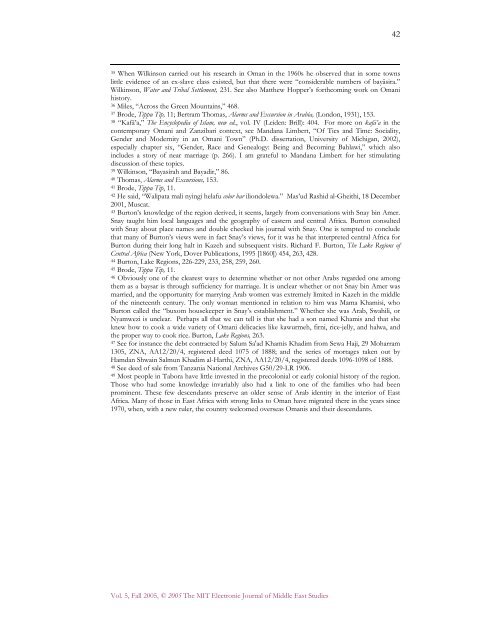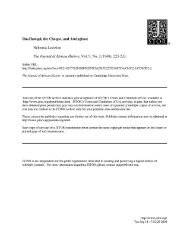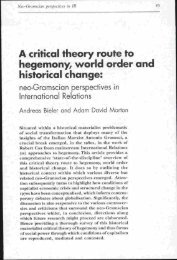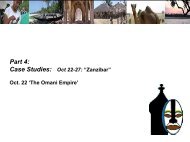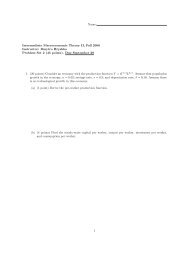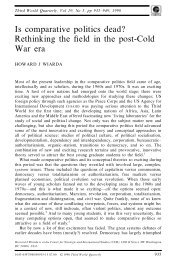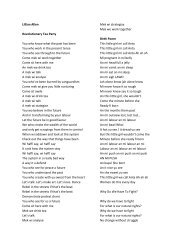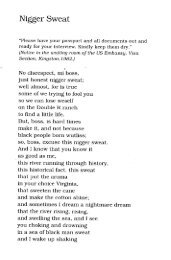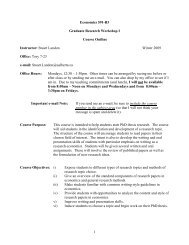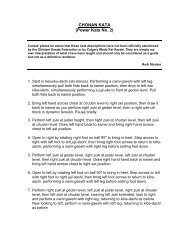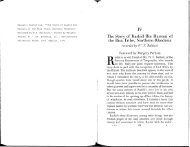personal memories revolutionary states and indian ocean migrations
personal memories revolutionary states and indian ocean migrations
personal memories revolutionary states and indian ocean migrations
Create successful ePaper yourself
Turn your PDF publications into a flip-book with our unique Google optimized e-Paper software.
35 When Wilkinson carried out his research in Oman in the 1960s he observed that in some towns<br />
little evidence of an ex-slave class existed, but that there were “considerable numbers of bayāsira.”<br />
Wilkinson, Water <strong>and</strong> Tribal Settlement, 231. See also Matthew Hopper’s forthcoming work on Omani<br />
history.<br />
36 Miles, “Across the Green Mountains,” 468.<br />
37 Brode, Tippu Tip, 11; Bertram Thomas, Alarms <strong>and</strong> Excursion in Arabia, (London, 1931), 153.<br />
38 “Kafā’a,” The Encyclopedia of Islam, new ed., vol. IV (Leiden: Brill): 404. For more on kafā’a in the<br />
contemporary Omani <strong>and</strong> Zanzibari context, see M<strong>and</strong>ana Limbert, “Of Ties <strong>and</strong> Time: Sociality,<br />
Gender <strong>and</strong> Modernity in an Omani Town” (Ph.D. dissertation, University of Michigan, 2002),<br />
especially chapter six, “Gender, Race <strong>and</strong> Genealogy: Being <strong>and</strong> Becoming Bahlawi,” which also<br />
includes a story of near marriage (p. 266). I am grateful to M<strong>and</strong>ana Limbert for her stimulating<br />
discussion of these topics.<br />
39 Wilkinson, “Bayasirah <strong>and</strong> Bayadir,” 86.<br />
40 Thomas, Alarms <strong>and</strong> Excursions, 153.<br />
41 Brode, Tippu Tip, 11.<br />
42 He said, “Walipata mali nyingi helafu color bar iliondolewa.” Mas’ud Rashid al-Gheithi, 18 December<br />
2001, Muscat.<br />
43 Burton’s knowledge of the region derived, it seems, largely from conversations with Snay bin Amer.<br />
Snay taught him local languages <strong>and</strong> the geography of eastern <strong>and</strong> central Africa. Burton consulted<br />
with Snay about place names <strong>and</strong> double checked his journal with Snay. One is tempted to conclude<br />
that many of Burton’s views were in fact Snay’s views, for it was he that interpreted central Africa for<br />
Burton during their long halt in Kazeh <strong>and</strong> subsequent visits. Richard F. Burton, The Lake Regions of<br />
Central Africa (New York, Dover Publications, 1995 [1860]) 454, 263, 428.<br />
44 Burton, Lake Regions, 226-229, 233, 258, 259, 260.<br />
45 Brode, Tippu Tip, 11.<br />
46 Obviously one of the clearest ways to determine whether or not other Arabs regarded one among<br />
them as a baysar is through sufficiency for marriage. It is unclear whether or not Snay bin Amer was<br />
married, <strong>and</strong> the opportunity for marrying Arab women was extremely limited in Kazeh in the middle<br />
of the nineteenth century. The only woman mentioned in relation to him was Mama Khamisi, who<br />
Burton called the “buxom housekeeper in Snay’s establishment.” Whether she was Arab, Swahili, or<br />
Nyamwezi is unclear. Perhaps all that we can tell is that she had a son named Khamis <strong>and</strong> that she<br />
knew how to cook a wide variety of Omani delicacies like kawurmeh, firni, rice-jelly, <strong>and</strong> halwa, <strong>and</strong><br />
the proper way to cook rice. Burton, Lake Regions, 263.<br />
47 See for instance the debt contracted by Salum Sa'ad Khamis Khadim from Sewa Haji, 29 Moharram<br />
1305, ZNA, AA12/20/4, registered deed 1075 of 1888; <strong>and</strong> the series of mortages taken out by<br />
Hamdan Shwain Salmun Khadim al-Harthi, ZNA, AA12/20/4, registered deeds 1096-1098 of 1888.<br />
48 See deed of sale from Tanzania National Archives G50/29-LR 1906.<br />
49 Most people in Tabora have little invested in the precolonial or early colonial history of the region.<br />
Those who had some knowledge invariably also had a link to one of the families who had been<br />
prominent. These few descendants preserve an older sense of Arab identity in the interior of East<br />
Africa. Many of those in East Africa with strong links to Oman have migrated there in the years since<br />
1970, when, with a new ruler, the country welcomed overseas Omanis <strong>and</strong> their descendants.<br />
Vol. 5, Fall 2005, © 2005 The MIT Electronic Journal of Middle East Studies<br />
42


